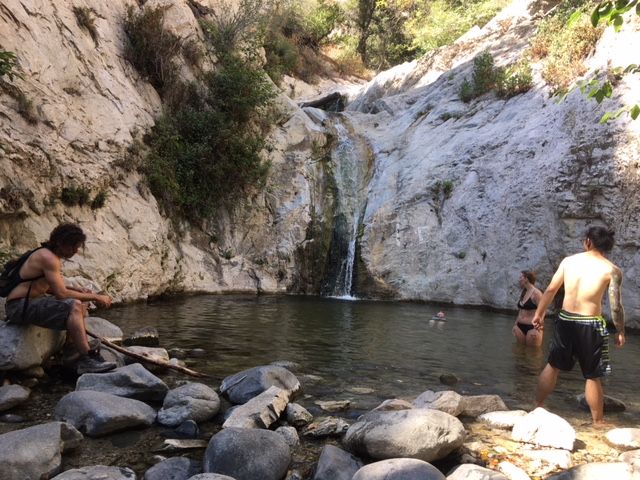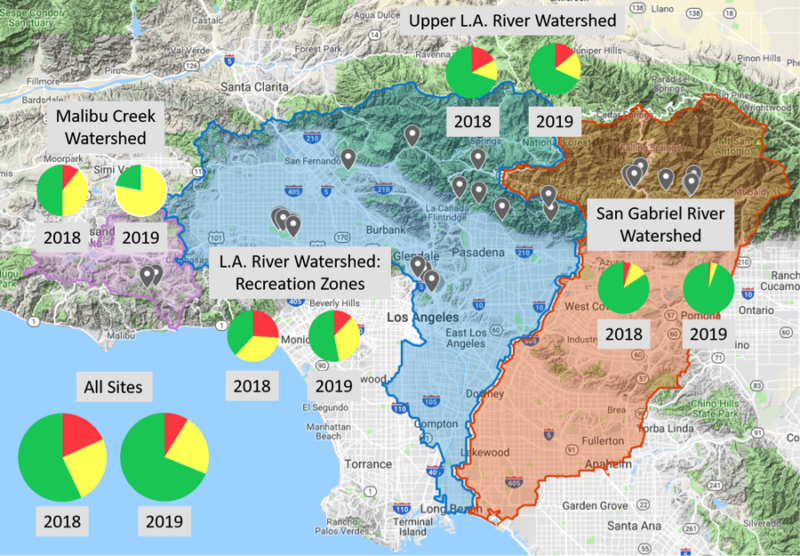How Clean is the Water at Your Favorite Freshwater Swimming Hole?
Heal the Bay’s annual River Report Card Rates 28 Freshwater Recreation Sites in Los Angeles River, San Gabriel River, and Malibu Creek Watersheds

2020 so far has been the year of making the best of it. When it comes to freshwater resources in L.A. County, we don’t have many, but we do love our rivers and swimming holes. And many of us will be looking to explore more local freshwater recreation options this summer, whether it’s because we had to cancel our long-distance vacation plans or reconsider a trip to the beach due to Safer at Home measures.
But no trip to the river is worth getting sick. And unfortunately, many freshwater recreation sites in L.A. County do have levels of bacterial pollution that represent a significant health risk. Developed areas tend to be more polluted than those in the mountains and upper watersheds.
Our annual River Report Card is the most comprehensive report on freshwater bacterial water quality and health risks in L.A County. The report grades each freshwater recreation site with a Red, Yellow, or Green rating.
- Green : Zero parameters exceeded; low risk of illness when there is water contact.
- Yellow : One to half of the parameters exceeded; moderate risk of illness when there is water contact.
- Red : More than half of the parameters exceeded; high risk of illness when there is water contact.
In addition to the annual report, which summarizes the data collected in 2019, we also have an interactive map at healthebay.org/riverreportcard, which is updated weekly, so you can check the latest water quality observation before choosing a place to go this summer.
A Note About Swimming in the Time of COVID-19
While we have a pandemic going on, it’s especially important to be safe any time you leave the house, including outdoor recreation. That means wearing a mask and keeping a safe physical distance from others.
Our water quality tests do not detect the presence of the COVID-19 virus in the water, but they do detect fecal indicator bacteria (FIB). The COVID-19 virus has been detected in sewage, indicating that fecal matter from infected individuals can contain the virus. We do not know how long the virus survives in sewage or in water, and we do not know if someone can contract the COVID-19 disease from coming into contact with water. Experts have stated that the transmission risk in water is likely very low because the virus mainly spreads through person-to-person contact. Since COVID-19 and FIB both enter our waterways through sewage, measuring FIB concentrations can help keep people safe from both.
Be sure to check for closures and specific restrictions at freshwater sites, trails, and open space before you head out. And, as always when you visit the river, make sure to pack out what you pack in. Be a water steward and keep plastics and trash out of the environment.
Be safe, have fun, and enjoy your local waters.
Download the annual River Report Card
See the annual River Report Card Media Release
Check out the Weekly Updated River Report Card Interactive Map



